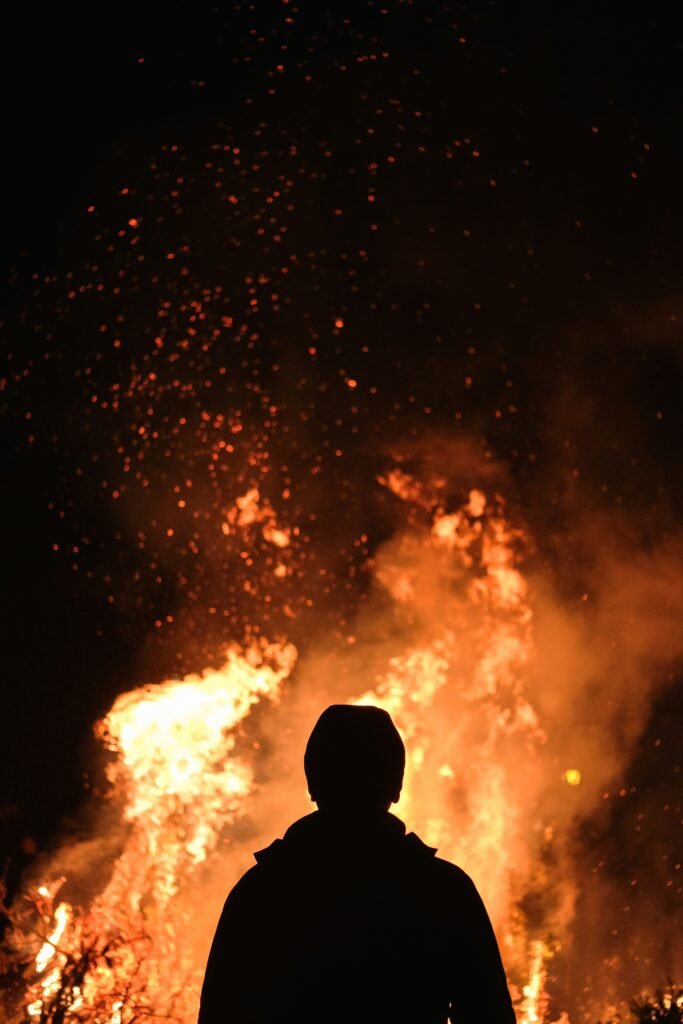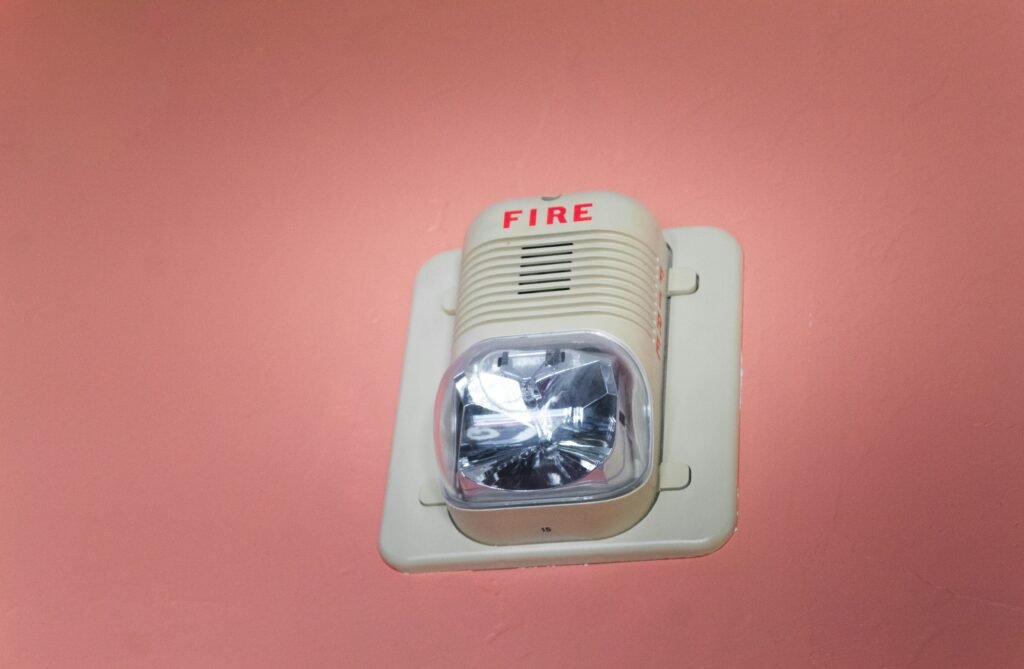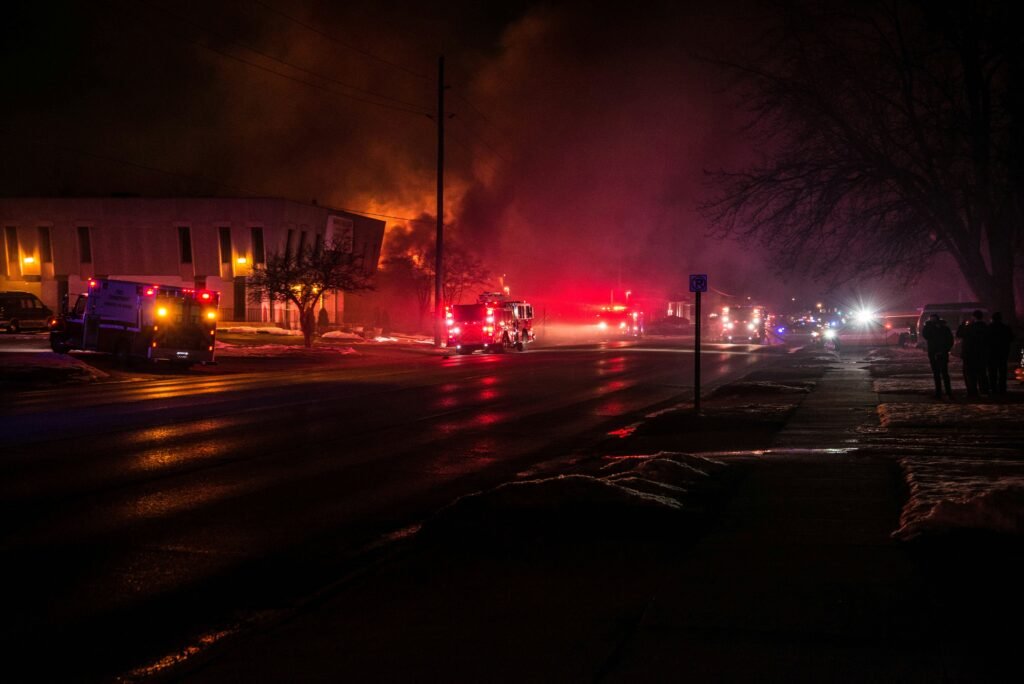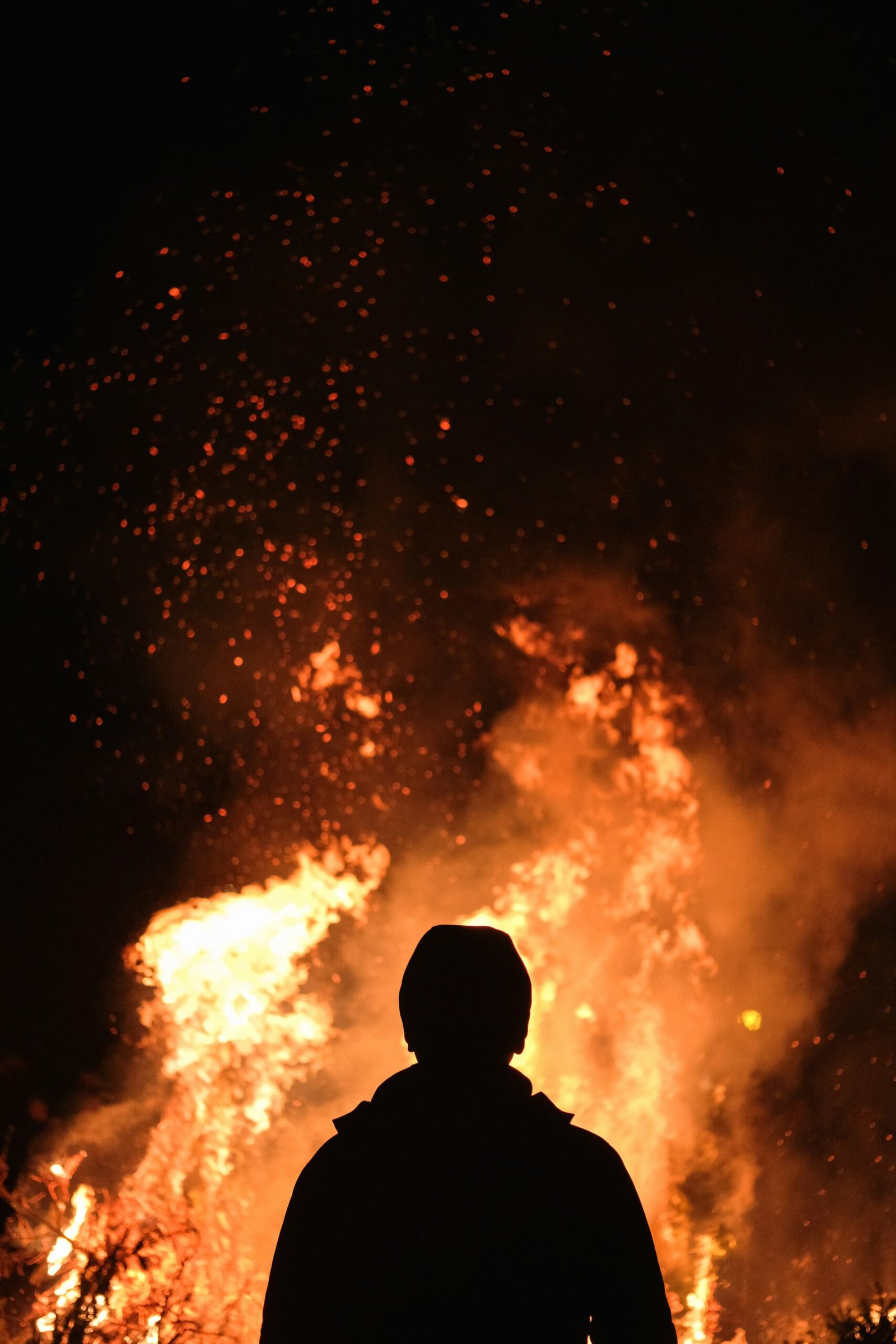As the weather starts to cool down and the leaves begin to fall, it’s time to think about cozy nights by the fireplace. However, it’s important to remember that with each change in season, there are specific precautions to take to ensure your safety. From checking the condition of your chimney to using the appropriate kindling, this article will guide you through the necessary steps to adapt your fireplace precautions for every weather, allowing you to enjoy the warmth and comfort without any worries.
Learn More About Fireplace Safety
Inspect and Clean the Fireplace
Check for any signs of damage or deterioration
Before lighting a fire in your fireplace, it is essential to thoroughly inspect it for any signs of damage or deterioration. Look for cracks in the bricks or mortar, as well as any loose or crumbling pieces. Additionally, check the chimney for any signs of damage, such as loose bricks or a deteriorating chimney cap. Addressing these issues before using the fireplace can prevent potential hazards and ensure the safe operation of the fire.
Clean out ashes and debris from previous use
Before starting a fire, it is crucial to clean out any ashes and debris from the previous use of the fireplace. Use a fireplace shovel or small metal dustpan to carefully remove the ashes, making sure to dispose of them in a metal container designated for ashes. Cleaning out the fireplace not only improves the efficiency of the fire but also reduces the risk of sparks and embers escaping and causing a fire hazard.
Have the chimney professionally inspected and cleaned
Regularly having your chimney inspected and cleaned by a professional is vital for maintaining the safety and functionality of your fireplace. A professional chimney sweep will ensure that your chimney is clear of creosote buildup, which can lead to chimney fires. They will also check for any obstructions or damage that may affect the proper functioning of the chimney. A professional inspection and cleaning should be done at least once a year, preferably before the start of the winter season.
Install and Maintain Smoke and Carbon Monoxide Detectors
Install smoke detectors near the fireplace and in each bedroom
To ensure early detection of a fire, it is important to install smoke detectors near your fireplace and in every bedroom of your home. Smoke detectors should be placed on the ceiling or high on the wall, following the manufacturer’s instructions. Regularly check the batteries and test the detectors to ensure they are functioning correctly.
Place carbon monoxide detectors on every level of the home
In addition to smoke detectors, it is crucial to install carbon monoxide detectors on every level of your home, including near the fireplace. Carbon monoxide is a colorless and odorless gas that can be released during the burning of fuel, such as wood or gas. Having carbon monoxide detectors in place will alert you to any potential buildup of this dangerous gas, allowing you to take swift action to protect yourself and your family.
Test detectors regularly and replace batteries as needed
Simply installing smoke and carbon monoxide detectors is not enough; you must also test them regularly to ensure they are functioning properly. Follow the manufacturer’s instructions on how to test your detectors, and establish a schedule for testing them at least once a month. Additionally, it is important to replace the batteries in your detectors as needed, typically every six months, to ensure they continue to provide the necessary protection.

This image is property of images.unsplash.com.
Get Tips For Staying Safe Around Fireplaces
Use Proper Fuel and Firewood
Only use dry and seasoned firewood
Using dry and seasoned firewood is crucial for safe and efficient fireplace operation. Wet or green wood can create excess smoke and lead to the buildup of creosote in the chimney, increasing the risk of a chimney fire. Dry and seasoned firewood should be stored in a dry and ventilated area for at least six months to ensure it reaches the proper moisture content for burning.
Avoid burning treated or painted wood
It is important to avoid burning treated or painted wood in your fireplace. These types of wood can release toxic substances when burned, posing health risks to you and your family. Additionally, burning treated or painted wood can create hazardous emissions and damage your fireplace and chimney.
Do not use flammable liquids to start a fire
Using flammable liquids, such as gasoline or lighter fluid, to start a fire in your fireplace is extremely dangerous. These liquids can ignite quickly and unpredictably, leading to a potentially uncontrollable fire. Instead, use a safe and reliable method, such as newspaper, kindling, or commercial fire starters, to start your fire.
Consider using EPA-certified wood-burning appliances
If you are using a wood-burning appliance, such as a fireplace insert or wood stove, consider using one that is EPA-certified. EPA-certified appliances are designed to burn wood more efficiently, producing less smoke and emissions. These appliances are also equipped with safety features that reduce the risk of accidental fires.
Keep the Area Around the Fireplace Clear
Remove any flammable items like papers, fabrics, and decorations
To minimize fire hazards, it is important to remove any flammable items from the area around your fireplace. Items such as papers, fabrics, and decorations should be kept at a safe distance from the fireplace to prevent accidental ignition. Ensure that your fireplace mantel is also clear of any flammable objects.
Maintain a clear space of at least three feet around the fireplace
In addition to removing flammable items, it is crucial to maintain a clear space of at least three feet around the fireplace. This clear space ensures that there is no risk of nearby objects catching fire due to sparks or embers escaping the firebox. Keep furniture, rugs, and other combustible materials a safe distance away from the fireplace.
Use a fireplace screen or glass doors to prevent sparks from escaping
To further enhance the safety of your fireplace, consider installing a fireplace screen or glass doors. These barriers act as a shield, preventing sparks and embers from escaping the firebox and potentially causing a fire. Ensure that the screen or doors are properly installed and in good condition to provide maximum protection.

This image is property of images.unsplash.com.
Supervise the Fire and Extinguish It Properly
Never leave a fire unattended
It is crucial never to leave a fire unattended in your fireplace. Always ensure that there is a responsible adult present to supervise the fire and monitor it for any signs of trouble. Even if the fire appears to be contained, accidents can happen quickly, and it is always better to be safe than sorry.
Use a fireplace tool to control the fire and prevent flare-ups
When tending to a fire, it is important to use a fireplace tool, such as a poker or tongs, to control the flames and prevent flare-ups. Avoid using your hands or any flammable materials to adjust the logs or stir the fire. By using proper fireplace tools, you can maintain the safety of the fire and reduce the risk of accidents.
Have a fire extinguisher nearby and know how to use it
It is essential to have a fire extinguisher nearby whenever a fire is lit in your fireplace. Make sure that the fire extinguisher is appropriate for extinguishing fires in wood-burning appliances and that it is easily accessible. Additionally, take the time to familiarize yourself with how to use a fire extinguisher properly. Remember the acronym “PASS” (Pull, Aim, Squeeze, Sweep) to effectively extinguish a small fire.
Wait until the fire is completely out before leaving the room
Before leaving the room or going to bed, ensure that the fire in the fireplace is completely extinguished. Use a fireplace tool to carefully separate the logs and spread the embers to accelerate the cooling process. It is important to wait until there are no remaining embers or hot ashes before leaving the room to prevent the risk of accidental fires.
Monitor the Smoke and Chimney Draft
Ensure proper ventilation by opening the damper before starting a fire
Proper ventilation is essential when using a fireplace. Before starting a fire, make sure to open the damper fully to allow for proper airflow. This will help prevent the buildup of smoke and harmful gases in your home and ensure that the fire burns efficiently.
Use a fireplace grate to improve air circulation
Using a fireplace grate can help improve air circulation and increase the efficiency of your fireplace. A grate elevates the firewood, allowing for better airflow and more complete combustion. This can result in a cleaner, hotter fire and reduce the buildup of smoke and creosote in the chimney.
Watch for excessive smoke or smoky smells and address any issues
While using your fireplace, keep an eye out for excessive smoke or strong smoky smells. These can indicate an issue with the airflow or ventilation in your chimney. If you notice any unusual or persistent smoke-related problems, it is important to address them promptly. Contact a professional chimney sweep to inspect and troubleshoot the issue.

This image is property of images.unsplash.com.
Educate Children about Fireplace Safety
Teach children about the dangers of playing near the fireplace
It is crucial to educate children about the potential dangers of playing near the fireplace. Explain to them that the fire can be hot and unpredictable, and they should never touch or play with the fire or any fireplace tools. By instilling this awareness in children, you can help prevent accidents and injuries.
Establish clear boundaries and rules for fireplace safety
Establishing clear boundaries and rules for fireplace safety is essential in households with children. Make it clear which areas around the fireplace are off-limits and explain the consequences of disobeying these rules. Consistently enforce these boundaries to create a safe environment for everyone.
Supervise children when they are in the same room as the fireplace
Whenever children are in the same room as the fireplace, they should be closely supervised by a responsible adult. This ensures that any potential accidents or unsafe behavior can be swiftly addressed and prevented. By maintaining constant supervision, you can ensure the safety of your children around the fireplace.
Prepare for Emergencies
Create and practice a fire escape plan with your family
In case of a fire emergency, it is crucial to have a well-practiced fire escape plan in place with your family. This plan should include designated escape routes, meeting points outside the home, and clear instructions on how to respond in the event of a fire. Regularly practice the fire escape plan with your family to ensure everyone knows what to do in an emergency.
Keep a phone and emergency numbers near the fireplace
Having a phone and emergency numbers easily accessible near the fireplace can save valuable time in the event of a fire emergency. Keep a fully charged mobile phone or a landline phone with emergency numbers programmed nearby. This way, you can quickly call for help if needed.
Know how to safely extinguish a fire in case of emergency
In the event of a fire emergency, it is important to know how to safely extinguish a fire if it is safe to do so. If a small fire occurs and you have the appropriate training and equipment, such as a fire extinguisher, use it to put out the fire. However, if the fire is too large or uncontrollable, evacuate the premises immediately and call the fire department.
Maintain a Clean and Well-Functioning Chimney
Regularly remove creosote buildup from the chimney
Creosote is a flammable substance that can accumulate in your chimney over time. Regularly removing this buildup is essential for preventing chimney fires. Hire a professional chimney sweep to clean your chimney and remove the creosote at least once a year. Regular cleanings will help maintain the efficiency and safety of your chimney.
Schedule annual inspections and maintenance
Along with regular cleanings, it is important to schedule annual inspections of your chimney. A professional chimney sweep can identify any potential issues or damage that may need to be addressed. They can also ensure that the chimney is structurally sound, free of blockages, and functioning properly.
Address any chimney issues promptly
If you notice any signs of chimney issues, such as leaks, cracks, or unusual odors, it is important to address them promptly. Ignoring these issues can lead to more significant damage and pose a safety risk. Contact a professional chimney service to assess and repair any chimney problems as soon as possible.
Stay Informed about Fire Safety
Stay updated on local fire safety regulations
Fire safety regulations can vary by location, so it is important to stay informed about the specific guidelines and regulations relevant to your area. Familiarize yourself with the local fire codes and any specific requirements for fireplaces or wood-burning appliances. By staying informed, you can ensure that your fireplace is in compliance with local regulations and safely operated.
Read and follow the manufacturer’s instructions for your fireplace
To ensure the safe operation of your fireplace, it is crucial to read and follow the manufacturer’s instructions. Different fireplace models may have specific guidelines or recommendations for safe usage, maintenance, and fuel types. By adhering to these instructions, you can maximize the safety and efficiency of your fireplace.
Attend fire safety workshops or courses
Learning about fire safety through workshops or courses can provide valuable knowledge and practical skills to help you protect yourself, your family, and your home. Look for local fire safety workshops or courses offered by fire departments, community organizations, or online resources. By staying proactive and informed, you can enhance your overall fire safety awareness and take appropriate precautions.
By following these comprehensive fireplace safety guidelines, you can enjoy the warmth and ambiance of your fireplace while minimizing the risk of fire hazards. Remember, fire safety should always be a top priority, and taking the necessary precautions will ensure that you can safely enjoy your fireplace throughout the seasons. Stay safe and warm!




